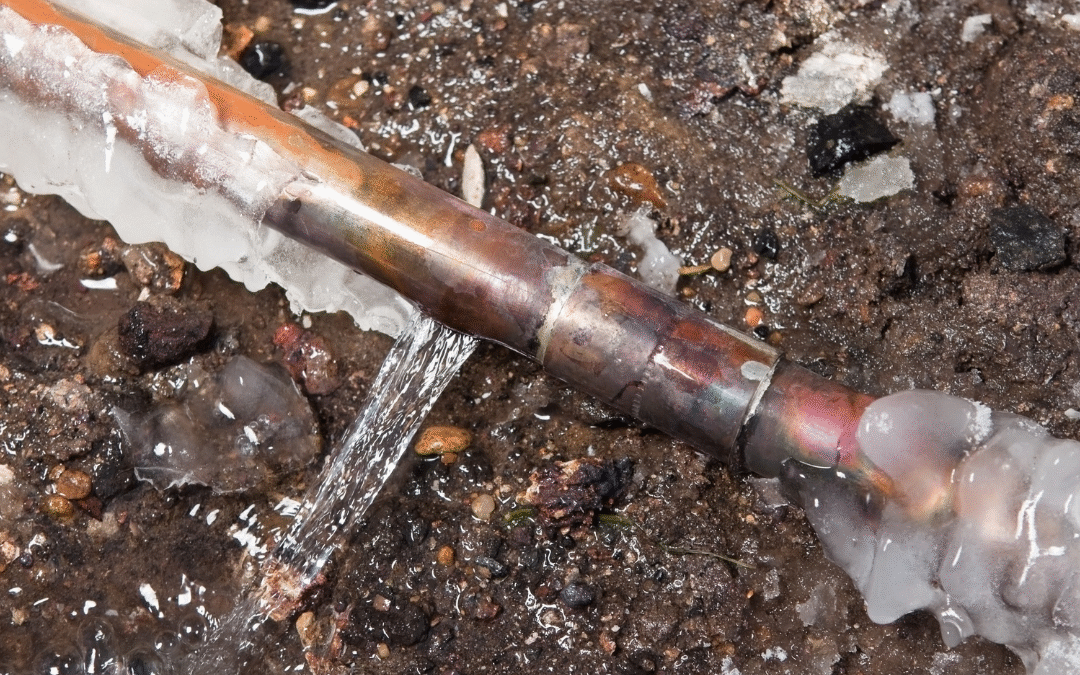When the temperatures in Northern Kentucky and Greater Cincinnati plunge into the teens or below, frozen pipes become a real risk—especially in unheated basements, crawlspaces, and exterior walls. A frozen pipe isn’t just an inconvenience; if it bursts, it can unleash hundreds of gallons of water into your home in minutes.
The good news? If you act quickly and carefully, you can often thaw a frozen pipe before it breaks. Here’s exactly what to do.
Table of Contents
1. Turn Off the Water Supply to the Frozen Section
Before you do anything else, locate and close the main water shut-off valve to your home. This prevents flooding if the pipe bursts during thawing.
- In most NKY homes, the main valve is in the basement near the water meter.
- In slab homes, it may be in a utility room, garage, or crawlspace.
2. Locate the Frozen Pipe
Look for:
- Faucets that aren’t running or produce only a trickle
- Frost, ice, or bulging on exposed pipe sections
- Unusually cold areas in walls, basements, or under sinks
If you can’t easily find the frozen spot, or if it’s inside a wall, it’s safer to call a plumber with thermal imaging equipment to pinpoint it.
3. Safely Thaw the Pipe
Never use an open flame—like a blowtorch or propane heater—on a pipe. This is a major fire hazard and can damage the pipe.
Safer thawing methods:
- Hair dryer – Start closest to the faucet and work toward the frozen area.
- Heat lamp or portable space heater – Keep at least 3 feet from flammable materials.
- Warm towels – Soak in hot water, wring out, and wrap around the pipe.
- Heat tape – An electric wrap made specifically for pipes.
Open the faucet slightly before thawing so water can begin to flow once ice melts—this helps relieve pressure.
4. Check for Leaks Once Thawed
Once water is running again, carefully inspect the pipe and surrounding area for any drips, damp spots, or pooling water. Even small leaks mean the pipe has been damaged and needs repair before using it normally.
5. When to Call a Plumber Immediately
You should bring in a licensed plumber right away if:
- You can’t find the frozen section
- The pipe is behind a wall, ceiling, or floor
- You see a visible split, crack, or bulge in the pipe
- You notice water leaking after thawing
- You have multiple frozen pipes or no water in the entire house
Preventing Frozen Pipes in the Future
After dealing with a frozen pipe, prevention becomes a top priority:
- Insulate exposed pipes in basements, crawlspaces, and garages
- Seal air leaks near where pipes enter the home
- Let faucets drip slightly during extreme cold
- Open cabinet doors under sinks on exterior walls to let warm air circulate
Local, Fast, and 24/7 Emergency Help
At A+ Services, we’ve been helping families in Covington, Florence, Burlington, Mason, and across Greater Cincinnati protect their homes from frozen pipes for decades. Whether you need help thawing a pipe, repairing a burst line, or winterizing your plumbing before the next cold snap, our licensed, background-checked plumbers are ready—day or night.
If your pipes freeze this winter, don’t wait. Call A+ Services for expert, safe, and fast help before a freeze turns into a flood.

